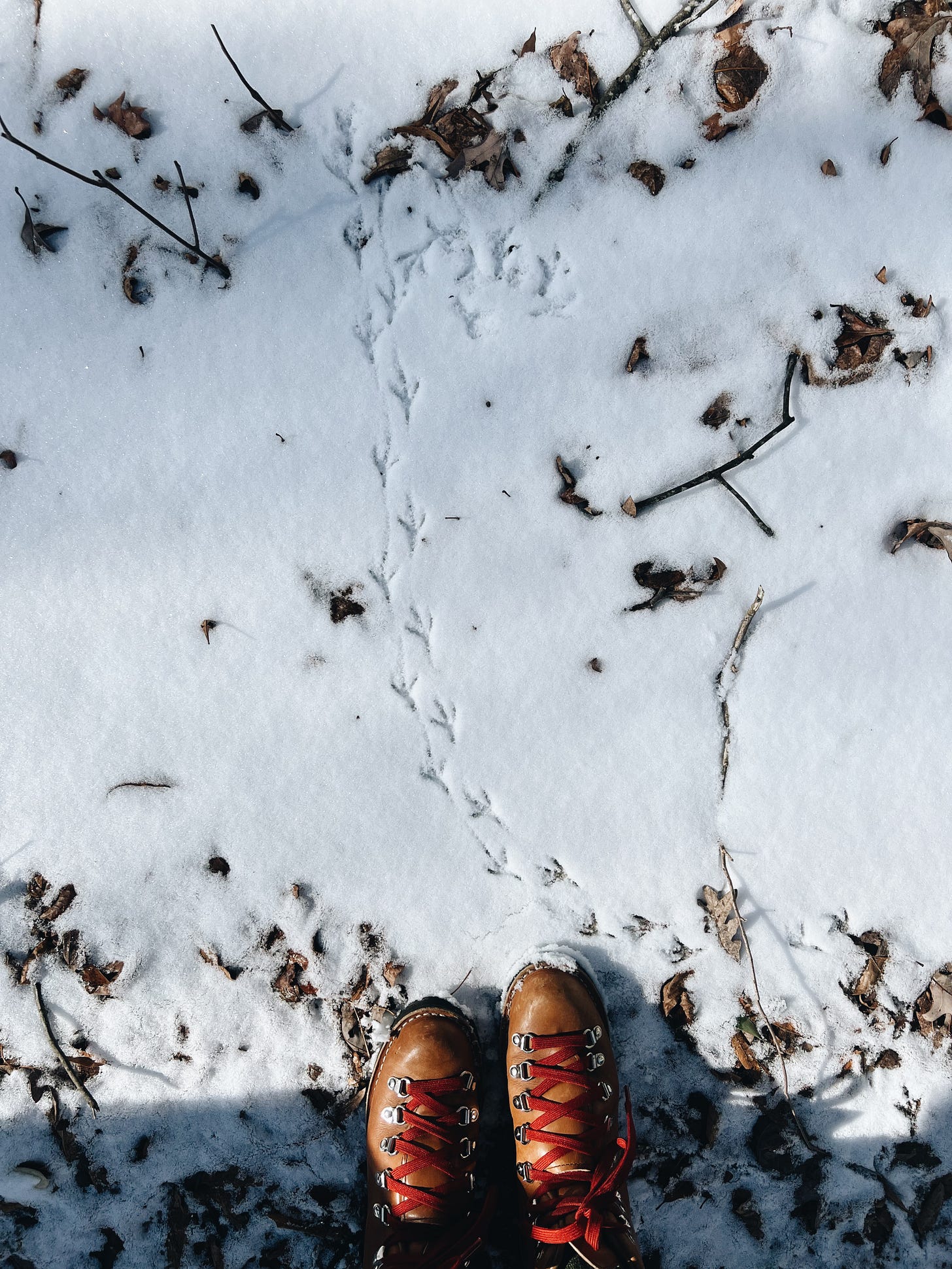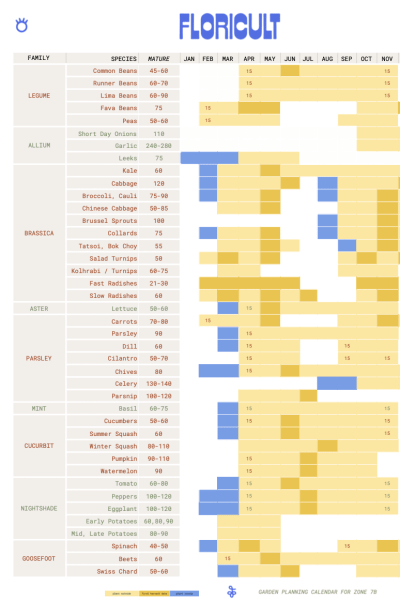for most of my life, i thought gardening was a summer affair. tomatoes, cucumbers, squash, green beans, and zucchini.
this is what i remember growing as a child, and there are few things i am more grateful for than my mother introducing me to my first garden in alabama when i was seven.
it wasn’t until 2020 when i read the year-round vegetable gardener that i realized there were cool crops, warm crops, AND cold crops. most of us casual gardeners are only growing these summer warm crops. you know, the ones that go out after the last frost in the spring, and die with the first frost in the fall. 🍁
when understanding the difference between seasonal crops, pay attention to their (1) ideal temperature for growth, (2) the hours of sun they need in a day, and (3) the temperature they experience damage/die at.
ideal temps: if you look at a pack of seeds and notice the ideal temp is 40-60°, it’s likely a cool crop. if the ideal temp is 70-90°, it’s likely a warm crop. if the range is large, like 50-85° (like beets), you can grow them cool or warm season. if you’ve tried to grow something in the summer and ‘it’s always sucked,’ it might have been a cool crop and your heat wiped it out! 🥵
sun: double check the hours of sun a plant needs too. for example: winter choy only needs 4-6 hours of full sun, is frost hardy, and ideal temp is 50-80° — so, if they’re planted in a sunny spot, you could assume they’d go out very early spring before the last frost and will do most of their growing in the cool spring temps with short days, OR you could plant them early in the fall and get the majority of their growing done before temps dip too far into the 30s/40s. (i usually google a bit to double check my assumptions - and look for extra little tips for success for a new variety.)
extending seasons: to start plants a little earlier and keep them a little longer, we can alter temps as much as 5-10° with frost cloths and cold frames. this won’t change the hours of sunlight in the day, but it can make a big difference here in north carolina, especially in the spring, where temps are tumultuous. our last frost isn’t until april 15 but usually march is full of 50s and 60s - GREAT cool crop weather. if i use frost cloths or cold frames, it can give me almost a month earlier start and i don’t have to worry about those nights that drop a few degrees below freezing. ❄️
cool (spring/fall) crops are frost tolerant, meaning a few 32° incidents won’t kill them — and many of them can be planted out as in late winter — and then started in late summer to grow through fall and even early winter. things like…
carrots + beets
radishes
lettuce + kale
broccoli + cabbage
bok choy / pak choi
peas
cold (winter) crops are frost hardy, can usually survive a hard freeze (below 28°) with a little protection, and can handle shorter days. yes, they will do most of their growing in the late summer and fall while there is more than 10 hours of sunlight, but the cool temps will hold them like a fridge, making them harvestable through the winter. things like…
parsnips
kale + tatsoi
carrots + beets
spinach + mache + mizuna
leeks + swiss chard
brussels + collards
if you are interested in growing more than just summer veggies, i highly recommend getting a copy of the year-round vegetable gardener and keeping it handy as you work each year to optimize your planting and harvest dates. niki jabbour grows in nova scotia and i am amazed what she’s able to harvest in a foot of snow.
FOR YOUR GARDEN PLANNING
if your head is spinning with dates, DON’T WORRY.
i’ve created a handy little calendar 📆 for your garden planning this year. it’s sorted by family. you may be surprised to see what is closely related, and what is not.
to download the pdf, click on the attached file above. to copy the google xls into your own drive and customize it yourself, you can access it here! 👩🏻💻
please note that this is for growers in zone 7. if you do not live inside of this light green band, that’s okay! you can take my google doc, copy it, and modify it easily for your climate.
zone 7’s first/last frost dates are april 15/nov 15. find your zone’s frost dates and adjust forward/backward by the weeks necessary.
lastly, i’ve also created a companion plants list 👯 as you lay out your gardens this year.
i hope these planning resources are useful. here are some other handy things:
some carhartt overalls i just got and really like
a nice song that makes me think of summer evenings
a good source for perennial wildflower seeds in bulk if you are planning a meadow or large wildflower area
last february’s email about how to buy + improve soil
my vsco if you wanna look at more garden photos
until next weekend,
lauren xo









